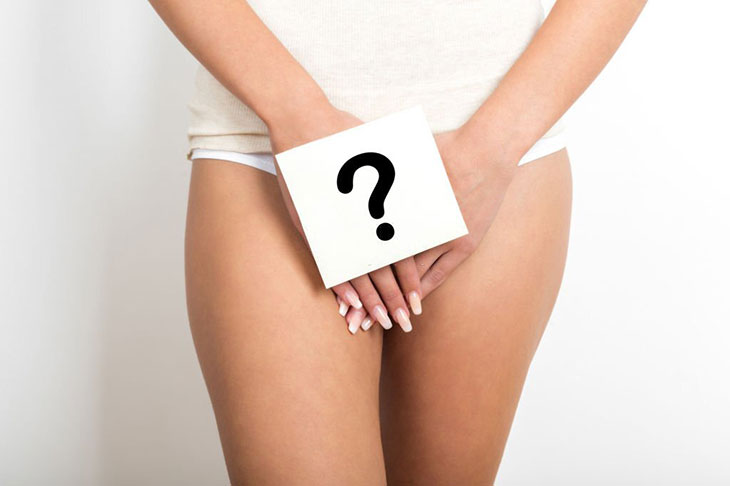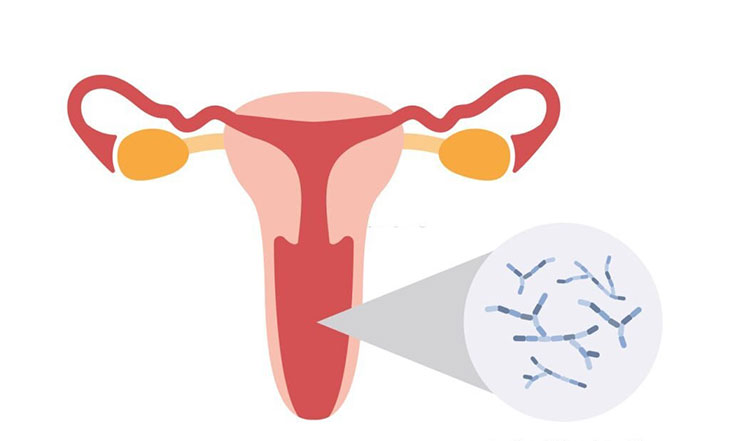After giving birth, a woman’s body undergoes many changes, making it difficult to distinguish between mixed pains.
That’s why many people ignore the early signs of yeast infection after giving birth, leading to severely affected reproductive health when not treated promptly.
The postpartum period can be when the mother’s body is most sensitive to disease attacks.
Don’t let the pain of a yeast infection torment your health and leave you with consequences in the future.
This article provides the basic causes, symptoms, treatment, and prevention of this serious disease.
Why Is Yeast Infection So Dangerous?

The golden time to treat a yeast infection is the prenatal period. Unfortunately, it’s not always possible for every pregnant woman.
When the disease is discovered after birth, it may have spread from the pregnant woman to her baby, leading to serious consequences for their health.
Harm The Baby When Breastfeeding
Candida fungus grows mainly in moist and dark environments. When a newborn is breastfed, the fungus may choose the nipple as a new refuge, causing a yeast infection in the nipple.
Women with a history of vaginal yeast infections and babies with diaper rash/thrush caused by yeast are the most likely to cause nipple yeast infections.
Superficial infections can be easily treated with over-the-counter medications.
But once the disease is ingrained in the milk ducts, taking medicines as prescribed by your doctor is your only option.
Regardless of location, this disease spreads quickly and is dangerous. Therefore, inform healthcare providers as soon as the first signs are detected.
Bad Complications For The Baby
Pregnant women with yeast infections during pregnancy may experience unwanted complications that directly affect the expected delivery time, including:
- Chorioamnionitis
- Premature rupture of membranes
- Premature labor
Yeast infections significantly shorten pregnancy, meaning the baby may not be ready to be born.
In addition, an infected pregnant woman can pass Candida to her baby during delivery, causing thrush in her newborn baby (thick white patches in the mouth).
Fortunately, you can use antifungal medications to treat it without causing any harm to your baby.
Treatment of the baby needs to be done in parallel with the complete treatment of this disease in the pregnant woman.
Otherwise, the newborn can still be reinfected and continue to have thrust.
Yeast Infection After Giving Birth- Top Causes

Postpartum is the most sensitive time for a pregnant woman, leading to strict requirements for postpartum monitoring.
Although health complications from yeast infections are quite common, with a fairly low mortality rate, that’s not all.
Pregnant women with cardiovascular and blood sugar diseases (high blood pressure, heart issues, and obesity) have a much higher risk of death than other women.
To ensure your health, never pass the following common causes of postpartum infections:
- Heart-related diseases
- Complications left by anesthesia
- Pregnancy disorders, high blood pressure
- Pulmonary artery obstruction
- Excessive postpartum hemorrhage/ bleeding after birth
- Anemia
- Cesarean
- The time from rupture of membranes to birth exceeded 18 hours
- Perform multiple vaginal exams during labor
- Rupture of fetal membranes
- Bacterial imbalance in the vagina after childbirth
In more severe cases, the causes of infection that a pregnant woman needs to deal with include:
- Pelvic abscess
- Inflammation of the abdominal lining
- Sepsis caused by bacterial toxins
- Pelvic vein thrombosis
Fortunately, most of these problems can be completely treated if diagnosed early.
Especially when you have heart and blood sugar disease, go for regular pregnancy health checks to promptly prevent unwanted pathogens.
Yeast Infection After Delivery- Common Signs
The pregnant woman’s body will send clear warning signs immediately after noticing the appearance of a postpartum yeast infection.
Don’t ignore the common symptoms listed below because they will directly affect the health of both you and your newborn baby!
High Fever
The human body often has defensive reactions when it detects the invasion of a fungal infection, such as high fever.
If the fever exceeds 100 degrees F, your body is trying to remove the bacteria.
Urinate Problems
Urinary tract infections are quite common, with very obvious signs. The pressure on the excretory system causes a woman to urinate more often.
But every time you try to “do something,” you will feel pain and numbness in your lower abdomen, leading to dripping or inability to urinate.
Nipple Issues
Mastitis occurs when milk ducts become blocked. Newborn babies refusing to breastfeed or not latch properly can cause breasts to become swollen, leading to a feeling of suffocation and red streaks/lumps on the breasts.
Bad Tears Or Cuts
Traditionally vaginal births sometimes tear the perineum (sometimes caused by a doctor’s incision to make the baby come out easier).
In a humid environment, these infected wounds are prone to redness, pain, and drainage to surrounding areas.
Foul-Smelling Vaginal Discharge
An imbalance of bacteria in the vagina causes endometriosis and vaginitis. As soon as you notice a vaginal discharge that smells like rotten eggs, you have a vaginal infection.
In case of infection in the perineum and vulva, the patient will have signs of swelling, edema, and pus at the perineal suture.
Severe Pain
Do you constantly face pain in your nipples while breastfeeding? It is a sign of nipple yeast infection caused by using breast pads.
Besides causing a foul-smelling vaginal discharge, endometriosis is also accompanied by severe pain in the lower abdomen.
If you’re experiencing swelling and inflammation in the lining of your uterus, you may have an infection with endometriosis.
Besides, sepsis also causes severe pain associated with tachycardia, sticky skin, disorientation, chills, and shortness of breath.
Because of the severity of the problem, call emergency or 911 as soon as possible.
How To Treat A Yeast Infection After Giving Birth?

As soon as the above symptoms appear, your first job is to notify your healthcare provider immediately.
Don’t ignore a mild fever suggested engorgement because it’s not the only cause of fever after giving birth.
Once diagnosed, you will receive prescriptions for antibiotics to treat the infection. Women who are breastfeeding will get other medicines that are safer for both mother and baby.
Combining intravenous antibiotics with other treatments for more severe cases would be best. Infected wounds require drainage and open surgery as soon as possible.
Follow a complete medication regimen, drink plenty of water, and get as much rest as possible; your body will be noticeably healthier.
Until you get the doctor’s approval, you can stop taking the medicine schedule.
How To Prevent Yeast Infection 1 Week Postpartum?
Some infections can be completely treated at home, while others require intensive treatment in the hospital.
Therefore, contact your doctor for advice whenever your body has problems caused by yeast.
Doctors often prescribe antibiotics before surgery to reduce the risk factors of infection for women who have had a cesarean section.
Epidural anesthesia during surgery/labor should be performed after the woman takes antibiotics because bladder catheters can easily cause urinary tract infections.
Breastfeeding mothers need to let their baby finish feeding on one breast before switching to the other breast, combined with changing the baby’s position.
Avoid letting your baby continuously suckle on both breasts, as the moist environment in the nipple will stimulate fungal growth.
FAQs
Are Yeast Infection Common After Giving Birth?
That’s right! Yeast infections are quite common in pregnant women after giving birth. Pregnant women often get yeast infections in their nipples by using breast pads.
In addition, cesarean sections or vaginal incisions for assisted reproduction can also become infected, causing persistent pain.
Urinary tract infections can bring a lot of trouble and pain to pregnant women when going to the toilet.
In the most severe cases, sepsis can be accompanied by symptoms of systemic pain, low blood pressure, and increased heart rate.
Can You Get A Yeast Infection After Giving Birth?
Postpartum women’s bodies are extremely sensitive and weak, leading to a higher risk of yeast infections.
Common conditions include postpartum infection (uterine infection), urinary tract infection, and mastitis infections.
Women with cardiovascular and blood sugar problems (heart disease, obesity, high blood pressure, etc.) have a higher incidence than normal women.
Therefore, see your doctor for regular health checks and to prevent pregnancy-related pathogens.
Are Yeast Infections Common Postpartum?
Pregnant women can get yeast infections before or several weeks after giving birth.
However, the postpartum period weakens the mother’s body, creating opportunities for bacterial-related diseases to attack.
Normally, doctors will prescribe antibiotics to aid fertility, but this inadvertently destroys the beneficial bacteria in the vagina.
This imbalance causes harmful bacteria to attack, leading to yeast infections.
Conclusion
Although yeast infection after giving birth is quite common and easy to treat, some diseases will become more serious without prompt medical intervention, even endangering the mother and baby’s life.
Newborn. At the first signs of infection, notify your healthcare provider immediately.
If you are unlucky enough to have problems related to infection, don’t worry too much.
Take the medicine prescribed by your doctor exactly as directed, combine a healthy lifestyle, and your body will fight all kinds of health problems. Good luck!
